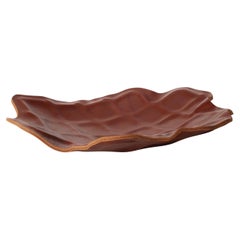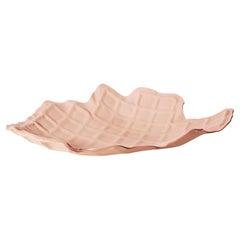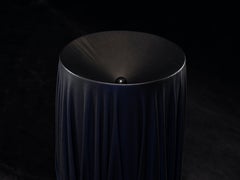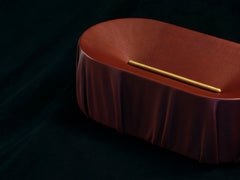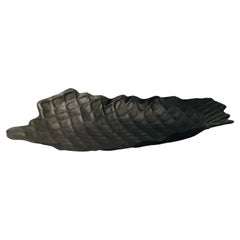Trent Jansen Bowls and Baskets
Designer Trent Jansen is at the forefront of design anthropology, a furniture and interior design movement in which designers and anthropologists work closely to produce products informed by the symbolism and visual principles of other cultures.
Each piece he designs has a rough, primal energy derived from a variety of techniques, whether incorporating scales into the surface of a side table or suggesting a spider’s shape through the form of a bench. Jansen holds immense respect for heritage, reverently and conscientiously embedding cultural identity and history in his pieces.
Jansen grew up in the small town of Kiama on the southeast Australian coast. He began his studies at the Industrial Design School of the University of Alberta in Canada and then transferred to the College of Fine Arts at the University of New South Wales, where he received his bachelor’s degree in design. He later earned a PhD from the University of Wollongong.
He then worked under Dutch designer Marcel Wanders in Amsterdam. In 2004, Jansen returned to Australia and opened his design studio in Sydney. Eventually, he relocated to Thirroul on the southern coast of Australia’s New South Wales.
Jansen has exhibited his work in solo and group shows worldwide, including at the National Gallery of Victoria, Australia, and venues in Singapore, Beijing and Milan. His awards include the 2008 Bombay Sapphire Design Discovery Award, the Australia Council for the Arts “Project Funding” Award in 2019 and 2017 and a 2021 Design Files + Laminex Design Award.
Today, Jansen continues to design new pieces and create outstanding works of furniture out of his studio in Thirroul.
On 1stDibs, find an intriguing array of Trent Jansen seating, tables, storage pieces and more.
2010s Australian Trent Jansen Bowls and Baskets
Aluminum
2010s Australian Trent Jansen Bowls and Baskets
Aluminum
2010s Australian Trent Jansen Bowls and Baskets
Brass
2010s Australian Trent Jansen Bowls and Baskets
Brass
2010s Australian Trent Jansen Bowls and Baskets
Aluminum
21st Century and Contemporary Australian Trent Jansen Bowls and Baskets
Aluminum
21st Century and Contemporary Australian Trent Jansen Bowls and Baskets
Aluminum
21st Century and Contemporary Australian Trent Jansen Bowls and Baskets
Aluminum
21st Century and Contemporary Australian Trent Jansen Bowls and Baskets
Aluminum
21st Century and Contemporary Australian Trent Jansen Bowls and Baskets
Aluminum
21st Century and Contemporary Australian Trent Jansen Bowls and Baskets
Aluminum
21st Century and Contemporary Australian Trent Jansen Bowls and Baskets
Aluminum
21st Century and Contemporary Australian Trent Jansen Bowls and Baskets
Aluminum
1950s French Vintage Trent Jansen Bowls and Baskets
Ceramic, Leather
1950s Swedish Scandinavian Modern Vintage Trent Jansen Bowls and Baskets
Wood, Lacquer
2010s Italian Modern Trent Jansen Bowls and Baskets
Travertine
21st Century and Contemporary Italian Modern Trent Jansen Bowls and Baskets
Ceramic
2010s Italian Mid-Century Modern Trent Jansen Bowls and Baskets
Porcelain
2010s Colombian Post-Modern Trent Jansen Bowls and Baskets
Stone
21st Century and Contemporary Italian Modern Trent Jansen Bowls and Baskets
Ceramic
2010s Italian Mid-Century Modern Trent Jansen Bowls and Baskets
Ceramic
Late 19th Century English Victorian Antique Trent Jansen Bowls and Baskets
Copper
21st Century and Contemporary Italian Modern Trent Jansen Bowls and Baskets
Brass, Silver
21st Century and Contemporary Italian Modern Trent Jansen Bowls and Baskets
Porcelain
21st Century and Contemporary Italian Modern Trent Jansen Bowls and Baskets
Ceramic
